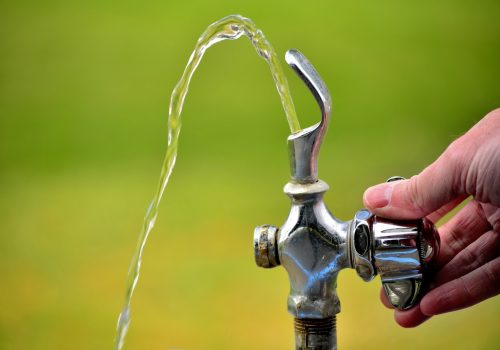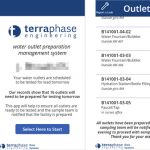Lead in School Drinking Water Testing



THE ISSUE
Children are at the highest risk for experiencing the long-term and adverse effects of lead in drinking water – yet there is no federal law requiring testing for lead in drinking water for schools that receive water from public water systems. As state and federal regulations continue to be in a state of flux, a handful of states have established requirements for testing in preemption to the federal government’s role and mandates. The U.S. Environmental Protection Agency (EPA) does, however, encourage schools, childcare facilities, states, and water purveyors to implement voluntary lead in drinking water testing programs, and has developed the 3Ts Toolkit: Testing, Training & Telling. Terraphase is helping to implement this approach across the United States.
WHAT TERRAPHASE IS DOING TO HELP
Since 2017, Terraphase has sampled over 800 schools, taking more than 8,000 water samples to test for lead in drinking water in support of school, state, and local programs and providing recommendations for fixes. Our involvement includes:
- Providing drinking water testing and compliance support under EPA Lead and Copper Rule and 3Ts approach
- Supporting the School District of Philadelphia with lead in drinking water sampling for over 300 facilities per City of Philadelphia Code, Title 4, Section A-703.1 (amended), pertaining to “Special Certificate of Inspection” requiring certification of water quality as a condition of occupancy for buildings used for education
- Supporting California water districts with lead in drinking water sampling for schools under California SWRCB-DDW Permit Amendments CA HSC Sec. 116277/Assembly Bill (AB) 746
- Testing for lead in school drinking water on behalf of private schools
- Developing and implementing site-specific training programs
OUR PROGRAM
Terraphase has established a program to help education leaders understand what’s potentially at stake: TEST. KNOW. ACT. The key elements of our program are described below.
- COMMUNICATION Transparent, comprehensive, and clear communication is the cornerstone of our program and present throughout every phase to properly plan, educate and train, share results, collaborate on next steps, and assist with ongoing public outreach.
- PLANNING A vital part of the program, planning allows us to establish roles among the team (key site contacts including school principals, staff, and/or maintenance personnel), identify sampling locations, and develop a schedule for sampling, reporting, and communication.
- SAMPLING Testing is the only real way to determine whether elevated levels of lead are present in drinking water. Terraphase staff are specifically trained to collect defensible, reliable data from first-draw water per EPA 3T recommendations
- REPORTING Our sampling program is set up to provide rapid and accurate notifications of action level exceedances to facilitate any shutoffs. (Note: action levels vary by jurisdiction.)
- DATA MANAGEMENT Using smart mobile field data collection methods avoids paper and transcription errors and document management pitfalls.
WHAT’S NEXT?
EPA has efforts underway to reconsider the action level for the Lead and Copper Rule, which may include a change in the action level from one that is based on technical feasibility, to one that also considers lead exposure in vulnerable populations, such as infants and young children, which EPA has referred to as a health-based benchmark. EPA also anticipates issuing comprehensive revisions to the Lead and Copper Rule by February 2020. Some states have already passed their own legislation and are proposing to evaluate water consumed by younger populations, such as AB 2370 in California where, starting in 2020, a licensed child daycare center that is located in a building constructed before January 1, 2010, will be mandated to have its drinking water tested for lead contamination levels on a specified schedule, and require parental notification of the test results. Pennsylvania and other states are soon expected to pass similar laws and guidance for the testing of lead in water, which may also be more conservative than the Federal 15 ppb action level.



